Previous Page | Right click this page to print.
Introduction
The feedstuffs fed to domestic animals are numerous and diverse. Figures 3.1, 3.2, 3.3, 3.4, and 3.5 are five examples of feedstuffs used in the diets of domestic animals. 3.1 illustrates grass pasture. 3.2 illustrates whole soybeans. Figure 3.3 illustrates whole cottonseed with lint. Figure 3.4 standard salt. Figure 3.5 corn kernels.
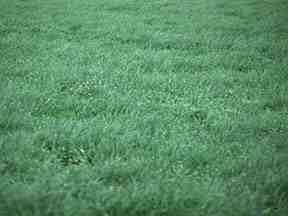 |
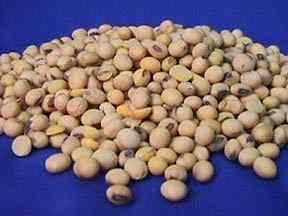 |
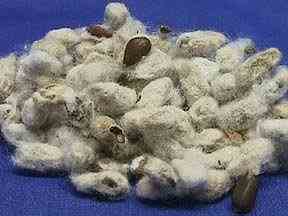 |
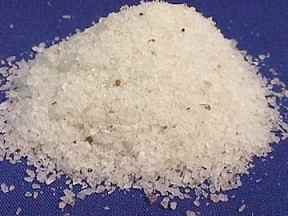 |
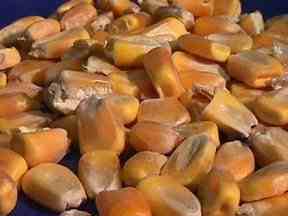 |
Feedstuffs are combined to produce rations. The two primary factors influencing the selection of feedstuffs and relative proportion of feedstuffs in a ration are nutrient content of a feedstuff and cost of the feedstuff. The nutrient profile of the resultant ration should closely match the nutrient profile of the animal’s requirements. Cost of the feedstuff will be analyzed based on cost per unit of nutrient provided by the feedstuff. It is important to note, technically, the terms ration and diet are two distinct terms. The ration is the combination of feedstuffs provided in a day. The diet is the combination of feedstuffs provided over an extended period of time.
A feedstuff is a component of a ration or a diet that serves one or more functions. The functions of a feedstuff can be divided into two categories. The first category is the feedstuff provides one or more of the six essential nutrients. The second category is the feedstuff modifies the characteristics of the diet such as improving palatability or rumen fermentation. An example of a feedstuff that serves at least one function in each of the two categories is alfalfa hay. For ruminants, alfalfa hay provides nutrients such as protein, CHO, minerals, and vitamins and also promotes rumen fermentation.
In the U.S., feedstuffs are classified according to two classification systems.
The first system is the International Feed Identification System. The International Feed Identification System classifies feedstuffs based on the primary nutrient provided by the feedstuff. The system classifies a feedstuff into one of eight classes. Table 3.1 lists the number and a description of the eight classes of feedstuffs.
| Number | Name |
|---|---|
| 1 | Dry roughages |
| 2 | Pasture and range grasses |
| 3 | Ensiled roughages |
| 4 | High energy concentrates |
| 5 | Protein sources |
| 6 | Minerals |
| 7 | Vitamins |
| 8 | Additives |
Following classification, each feedstuff is assigned a number. The number is the feedstuff’s International Feed Identification Number (IFN). The first digit of the IFN indicates the feedstuff’s class. The table on page 40 of the text provides a description of each of the eight classes of feedstuffs. The NRC is the source of this table. The International Feed Identification System is primarily used to formulate rations.
The second classification system is the classification system of the commercial feed trade. Each feedstuff is classified into one of seven classes. Table 3.2 lists the each of the seven classes.
Class |
|---|
| Animal protein products |
| Forage products |
| Grain products |
| Plant protein products |
| Processed grain by-products |
| Roughage products |
| Molasses products |
Each of the seven classes is a collective term, describing the origin of the feedstuff. Therefore, the classification system is based on the origin of the feedstuff. Each of the collective terms has been approved by the Association of Feed Control Officials (AFCO). The list on pages 41 through 43 of the text provides information regarding each of the collective terms and the associated feedstuffs. The classification system is used in the commercial feed trade to describe the feed ingredients to meet feed labeling regulations.
Pages 50 through 53 provide brief descriptions of terminology used in the feed industry. The terms will also be used in the course. Please become familiar with these terms.
Previous Page | Right click this page to print.